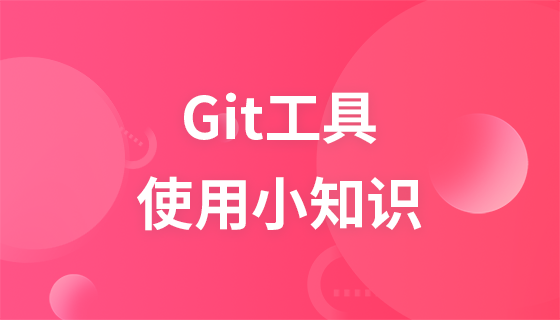
在 maven 项目中,依赖管理是其核心功能之一。pom.xml 文件中的 <dependencies> 标签用于声明项目直接依赖的库,而 <dependencymanagement> 标签则提供了一种更为灵活和强大的依赖版本管理机制。虽然两者都涉及依赖,但它们在功能和优先级上存在显著差异。
dependencyManagement 机制的核心优势在于实现依赖版本的集中管理,这在大型多模块项目中尤为重要。
理解 dependencyManagement 的一个关键点在于其与 <dependencies> 标签在版本解析上的优先级。当一个依赖同时在 dependencyManagement 和 dependencies 中定义,并且两者都指定了版本时,Maven 会如何选择?
考虑以下 pom.xml 片段示例:
<project>
<modelVersion>4.0.0</modelVersion>
<groupId>com.example</groupId>
<artifactId>my-app</artifactId>
<version>1.0-SNAPSHOT</version>
<dependencyManagement>
<dependencies>
<dependency>
<groupId>org.hamcrest</groupId>
<artifactId>hamcrest-core</artifactId>
<version>2.2</version>
<scope>test</scope>
</dependency>
</dependencies>
</dependencyManagement>
<dependencies>
<dependency>
<groupId>org.hamcrest</groupId>
<artifactId>hamcrest-core</artifactId>
<version>1.0</version>
<scope>test</scope>
</dependency>
</dependencies>
</project>根据 Maven 的依赖解析规则,在这种情况下,项目最终将使用 hamcrest-core 的 1.0 版本。
解析规则解释:
因此,在上述示例中,hamcrest-core 在 <dependencies> 中明确指定了 1.0 版本,这个版本将覆盖 dependencyManagement 中定义的 2.2 版本。
为了充分利用 dependencyManagement 的优势,以下是一些推荐的最佳实践:
在父 POM 中集中管理: 对于多模块项目,将所有公共依赖及其版本定义在父 POM 的 dependencyManagement 中。
<!-- parent/pom.xml (父项目POM) -->
<project>
<groupId>com.example</groupId>
<artifactId>parent-project</artifactId>
<version>1.0.0-SNAPSHOT</version>
<packaging>pom</packaging> <!-- 父项目通常是pom类型 -->
<dependencyManagement>
<dependencies>
<dependency>
<groupId>org.springframework.boot</groupId>
<artifactId>spring-boot-starter-web</artifactId>
<version>2.7.0</version>
</dependency>
<dependency>
<groupId>org.junit.jupiter</groupId>
<artifactId>junit-jupiter-api</artifactId>
<version>5.8.2</version>
<scope>test</scope>
</dependency>
<!-- 更多公共依赖及其版本定义 -->
</dependencies>
</dependencyManagement>
<modules>
<module>child-module-a</module>
<module>child-module-b</module>
</modules>
</project>子模块省略版本: 子模块在引用这些已在父 dependencyManagement 中定义的依赖时,只需声明 groupId 和 artifactId,无需指定 version 和 scope(如果 scope 也是统一的)。
<!-- child-module-a/pom.xml (子模块POM) -->
<project>
<parent>
<groupId>com.example</groupId>
<artifactId>parent-project</artifactId>
<version>1.0.0-SNAPSHOT</version>
</parent>
<artifactId>child-module-a</artifactId>
<dependencies>
<dependency>
<groupId>org.springframework.boot</groupId>
<artifactId>spring-boot-starter-web</artifactId>
<!-- 版本和scope将自动从父POM的dependencyManagement继承 -->
</dependency>
<dependency>
<groupId>org.junit.jupiter</groupId>
<artifactId>junit-jupiter-api</artifactId>
<!-- 版本和scope将自动从父POM的dependencyManagement继承 -->
</dependency>
</dependencies>
</project>特殊情况下的版本覆盖: 如果某个子模块确实需要使用与父 POM dependencyManagement 中定义不同的版本(例如,由于兼容性问题或特定功能需求),它可以在自己的 <dependencies> 中明确指定该依赖的版本。此时,子模块中指定的版本将优先。但这通常应作为例外情况,并仔细评估其对项目整体一致性的影响。
dependencyManagement 是 Maven 提供的一个强大工具,用于实现依赖版本的集中化管理和项目 POM 的简化。理解其与 <dependencies> 在版本解析上的优先级关系至关重要:显式定义在 <dependencies> 中的版本始终优先于 <dependencyManagement> 中定义的版本。通过合理利用 dependencyManagement,可以有效提升大型 Maven 项目的可维护性和稳定性,确保整个项目生态中的依赖版本一致性。
以上就是Maven dependencyManagement 与依赖版本解析机制的详细内容,更多请关注php中文网其它相关文章!

每个人都需要一台速度更快、更稳定的 PC。随着时间的推移,垃圾文件、旧注册表数据和不必要的后台进程会占用资源并降低性能。幸运的是,许多工具可以让 Windows 保持平稳运行。




Copyright 2014-2025 https://www.php.cn/ All Rights Reserved | php.cn | 湘ICP备2023035733号